 W
WTuberculosis (TB) is an infectious disease usually caused by Mycobacterium tuberculosis (MTB) bacteria. Tuberculosis generally affects the lungs, but can also affect other parts of the body. Most infections show no symptoms, in which case it is known as latent tuberculosis. About 10% of latent infections progress to active disease which, if left untreated, kills about half of those affected. The classic symptoms of active TB are a chronic cough with blood-containing mucus, fever, night sweats, and weight loss. It was historically called consumption due to the weight loss. Infection of other organs can cause a wide range of symptoms.
 W
WTuberculosis is a serious public health problem in China. China has the world's third largest cases of tuberculosis, but progress in tuberculosis control was slow during the 1990s. Detection of tuberculosis had stagnated at around 30% of the estimated total of new cases, and multidrug-resistant tuberculosis was a major problem. These signs of inadequate tuberculosis control can be linked to a malfunctioning health system. The spread of severe acute respiratory syndrome (SARS) in 2003, brought to light substantial weaknesses in the country's public health system. After the government realized the impact that the SARS outbreak had on the country, they increased leadership in their health department. After the SARS epidemic was brought under control, the government increased its commitment and leadership to tackle public health problems and, among other efforts, increased public health funding, revised laws that concerned the control of infectious diseases, implemented the world's largest internet-based disease reporting system to improve transparency, reach and speed, and started a program to rebuild local public health facilities and national infrastructure.
 W
W4-Aminosalicylic acid, also known as para-aminosalicylic acid (PAS) and sold under the brand name Paser among others, is an antibiotic primarily used to treat tuberculosis. Specifically it is used to treat active drug resistant tuberculosis together with other antituberculosis medications. It has also been used as a second line agent to sulfasalazine in people with inflammatory bowel disease such as ulcerative colitis and Crohn's disease. It is typically taken by mouth.
 W
WThrough its effect on the world's population and major artists in various fields, tuberculosis has influenced history. The disease was for centuries associated with poetic and artistic qualities in its sufferers, and was known as "the romantic disease". Many artistic figures including the poet John Keats, the composer Frédéric Chopin and the artist Edvard Munch either had the disease or were close to others who did.
 W
WThis is a bibliography of tuberculosis (TB), an infectious disease that generally affects the lungs. As of 2018, the World Health Organization estimated that 25% of the world's population was infected with the latent form of the disease. In its active form, it is one of the top 10 causes of death worldwide.
 W
WMycobacterium bovis is a slow-growing aerobic bacterium and the causative agent of tuberculosis in cattle. It is related to Mycobacterium tuberculosis, the bacterium which causes tuberculosis in humans. M. bovis can jump the species barrier and cause tuberculosis-like infection in humans and other mammals.
 W
WCaseous necrosis or caseous degeneration is a unique form of cell death in which the tissue maintains a cheese-like appearance. It is also a distinctive form of coagulative necrosis. The dead tissue appears as a soft and white proteinaceous dead cell mass.
 W
WCFP-10 also known as ESAT-6-like protein esxB or secreted antigenic protein MTSA-10 or 10 kDa culture filtrate antigen CFP-10 is a protein that is encoded by the esxB gene.
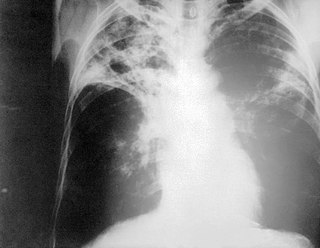 W
WChest photofluorography, or abreugraphy, is a photofluorography technique for mass screening for tuberculosis using a miniature photograph of the screen of an X-ray fluoroscopy of the thorax, first developed in 1936.
 W
WTuberculous lymphadenitis is the most common form of tuberculosis infections that appears outside the lungs. Tuberculous lymphadenitis is a chronic, specific granulomatous inflammation of the lymph node with caseation necrosis, caused by infection with Mycobacterium tuberculosis or related bacteria.
 W
WThe Eloesser flap is a surgical procedure developed by Dr. Leo Eloesser in 1935 at the San Francisco General Hospital. It was originally intended to aid with drainage of tuberculous empyemas, since at the time there were no effective medications to treat tuberculosis. The procedure was used extensively until the development of effective chemotherapy for tuberculosis in the late 1940s and early 1950s. It is still used occasionally for chronic empyemas.
 W
WTuberculosis (TB) is an infectious disease usually caused by Mycobacterium tuberculosis (MTB) bacteria. Tuberculosis generally affects the lungs, but can also affect other parts of the body. Most infections show no symptoms, in which case it is known as latent tuberculosis. About 10% of latent infections progress to active disease which, if left untreated, kills about half of those affected. The classic symptoms of active TB are a chronic cough with blood-containing mucus, fever, night sweats, and weight loss. It was historically called consumption due to the weight loss. Infection of other organs can cause a wide range of symptoms.
 W
WExtensively drug-resistant tuberculosis (XDR-TB) is a form of tuberculosis caused by bacteria that are resistant to some of the most effective anti-TB drugs. XDR-TB strains have arisen after the mismanagement of individuals with multidrug-resistant TB (MDR-TB).
 W
WExtrapulmonary tuberculosis is tuberculosis (TB) within a location in the body other than the lungs. This occurs in 15–20% of active cases, causing other kinds of TB. These are collectively denoted as "extrapulmonary tuberculosis". Extrapulmonary TB occurs more commonly in immunosuppressed persons and young children. In those with HIV, this occurs in more than 50% of cases. Notable extrapulmonary infection sites include the pleura, the central nervous system, the lymphatic system, the genitourinary system, and the bones and joints, among others.
 W
WA Ghon focus is a primary lesion usually subpleural, often in the mid to lower zones, caused by Mycobacterium bacilli (tuberculosis) developed in the lung of a nonimmune host. It is named for Anton Ghon (1866–1936), an Austrian pathologist.
 W
WIllness as Metaphor is a 1978 work of critical theory by Susan Sontag, in which she challenges the victim-blaming in the language that is often used to describe diseases and the people affected by them.
 W
WIntermittent fever is a type or pattern of fever in which there is an interval where temperature is elevated for several hours followed by an interval when temperature drops back to normal. This type of fever usually occurs during the course of an infectious disease. Diagnosis of intermittent fever is frequently based on the clinical history but some biological tests like complete blood count and blood culture are also used. In addition radiological investigations like chest X-ray, abdominal ultrasonography can also be used in establishing diagnosis.
 W
WHeinrich Hermann Robert Koch was a German physician and microbiologist. As one of the main founders of modern bacteriology, he identified the specific causative agents of tuberculosis, cholera, and anthrax and also gave experimental support for the concept of infectious disease, which included experiments on humans and animals. Koch created and improved laboratory technologies and techniques in the field of microbiology, and made key discoveries in public health. His research led to the creation of Koch's postulates, a series of four generalized principles linking specific microorganisms to specific diseases that proved influential on subsequent epidemiological principles such as the Bradford Hill criteria. For his research on tuberculosis, Koch received the Nobel Prize in Physiology or Medicine in 1905. The Robert Koch Institute is named in his honour.
 W
WLupus vulgaris are painful cutaneous tuberculosis skin lesions with nodular appearance, most often on the face around the nose, eyelids, lips, cheeks, ears and neck. It is the most common Mycobacterium tuberculosis skin infection. The lesions may ultimately develop into disfiguring skin ulcers if left untreated.
 W
WThe Mantoux test or Mendel–Mantoux test is a tool for screening for tuberculosis (TB) and for tuberculosis diagnosis. It is one of the major tuberculin skin tests used around the world, largely replacing multiple-puncture tests such as the tine test. The Heaf test, a form of tine test, was used until 2005 in the UK, when it was replaced by the Mantoux test. The Mantoux test is endorsed by the American Thoracic Society and Centers for Disease Control and Prevention. It was also used in the USSR and is now prevalent in most of the post-Soviet states.
 W
WMiliary tuberculosis is a form of tuberculosis that is characterized by a wide dissemination into the human body and by the tiny size of the lesions (1–5 mm). Its name comes from a distinctive pattern seen on a chest radiograph of many tiny spots distributed throughout the lung fields with the appearance similar to millet seeds—thus the term "miliary" tuberculosis. Miliary TB may infect any number of organs, including the lungs, liver, and spleen. Miliary tuberculosis is present in about 2% of all reported cases of tuberculosis and accounts for up to 20% of all extra-pulmonary tuberculosis cases.
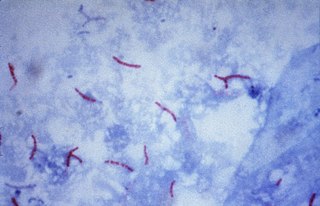 W
WMultidrug-resistant tuberculosis (MDR-TB) is a form of tuberculosis (TB) infection caused by bacteria that are resistant to treatment with at least two of the most powerful first-line anti-TB medications (drugs), isoniazid and rifampin. Some forms of TB are also resistant to second-line medications, and are called extensively drug-resistant TB (XDR-TB).
 W
WMycobacterium is a genus of Actinobacteria, given its own family, the Mycobacteriaceae. Over 190 species are recognized in this genus. This genus includes pathogens known to cause serious diseases in mammals, including tuberculosis and leprosy in humans. The Greek prefix myco- means "fungus," alluding to the way mycobacteria have been observed to grow in a mold-like fashion on the surface of cultures. It is acid fast and cannot be stained by the Gram stain procedure.
 W
WMycobacterium bovis is a slow-growing aerobic bacterium and the causative agent of tuberculosis in cattle. It is related to Mycobacterium tuberculosis, the bacterium which causes tuberculosis in humans. M. bovis can jump the species barrier and cause tuberculosis-like infection in humans and other mammals.
 W
WMycobacterium tuberculosis is a species of pathogenic bacteria in the family Mycobacteriaceae and the causative agent of tuberculosis. First discovered in 1882 by Robert Koch, M. tuberculosis has an unusual, waxy coating on its cell surface primarily due to the presence of mycolic acid. This coating makes the cells impervious to Gram staining, and as a result, M. tuberculosis can appear either Gram-negative or Gram-positive. Acid-fast stains such as Ziehl-Neelsen, or fluorescent stains such as auramine are used instead to identify M. tuberculosis with a microscope. The physiology of M. tuberculosis is highly aerobic and requires high levels of oxygen. Primarily a pathogen of the mammalian respiratory system, it infects the lungs. The most frequently used diagnostic methods for tuberculosis are the tuberculin skin test, acid-fast stain, culture, and polymerase chain reaction.
 W
WThe New England vampire panic was the reaction to an outbreak of tuberculosis in the 19th century throughout Rhode Island, eastern Connecticut, Vermont, and other parts of New England. Consumption (tuberculosis) was thought to be caused by the deceased consuming the life of their surviving relatives. Bodies were exhumed and internal organs ritually burned to stop the "vampire" from attacking the local population and to prevent the spread of the disease. Notable cases provoked national attention and comment, such as those of Mercy Brown in Rhode Island and Frederick Ransom in Vermont.
 W
WParonychia is an inflammation of the skin around the nail, which can occur suddenly, when it is usually due to the bacteria Staph. aureus, or gradually when it is commonly caused by Candida albicans. The term is from Greek: παρωνυχία from para, "around", onyx, "nail" and the abstract noun suffix -ia.
 W
WThe royal touch was a form of laying on of hands, whereby French and English monarchs touched their subjects, regardless of social classes, with the intent to cure them of various diseases and conditions. The thaumaturgic touch was most commonly applied to people suffering from tuberculous cervical lymphadenitis, and exclusively to them from the 16th century onwards. The disease rarely resulted in death and often went into remission on its own, giving the impression that the monarch's touch cured it. The claimed power was most notably exercised by monarchs who sought to demonstrate the legitimacy of their reign and of their newly founded dynasties.
 W
WThe tine test is a multiple-puncture tuberculin skin test used to aid in the medical diagnosis of tuberculosis (TB). The tine test is similar to the Heaf test, although the Mantoux test is usually used instead. There are multiple forms of the tine tests which usually fall into two categories: the old tine test (OT) and the purified protein derivative (PPD) tine test. Common brand names of the test include Aplisol, Aplitest, Tuberculin PPD TINE TEST, and Tubersol.
 W
WTuberculin, also known as purified protein derivative, is a combination of proteins that are used in the diagnosis of tuberculosis. This use is referred to as the tuberculin skin test and is recommended only for those at high risk. Injection is done into the skin. After 48 to 72 hours if there is more than a five to ten millimeter area of swelling the test is considered positive.
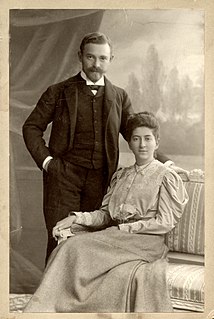 W
WDr Joseph Friedrich ("Fritz") Weleminsky, was a physician, a scientist and a privatdozent in Hygiene at the German University, Prague who, in the early 20th century, created an alternative treatment for tuberculosis, tuberculomucin Weleminsky.
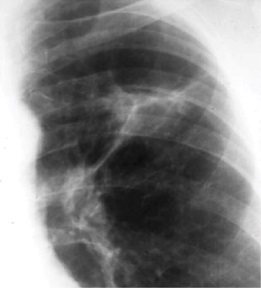 W
WGhon's complex is a lesion seen in the lung that is caused by tuberculosis. The lesions consist of a Ghon focus along with pulmonary lymphadenopathy within a nearby pulmonary lymph node. A Ghons complex retains viable bacteria, making them sources of long-term infection, which may reactivate and trigger secondary tuberculosis later in life.
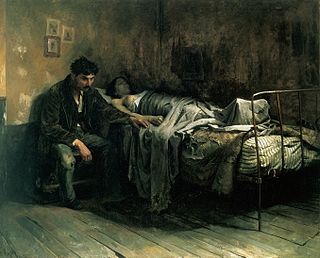 W
WThroughout history, the disease tuberculosis has been variously known as consumption, phthisis and the White Plague. It is generally accepted that the causative agent, Mycobacterium tuberculosis originated from other, more primitive organisms of the same genus Mycobacterium. In 2014, results of a new DNA study of a tuberculosis genome reconstructed from remains in southern Peru suggest that human tuberculosis is less than 6,000 years old. Even if researchers theorise that humans first acquired it in Africa about 5,000 years ago, there is evidence that the first tuberculosis infection happened about 9,000 years ago. It spread to other humans along trade routes. It also spread to domesticated animals in Africa, such as goats and cows. Seals and sea lions that bred on African beaches are believed to have acquired the disease and carried it across the Atlantic to South America. Hunters would have been the first humans to contract the disease there.
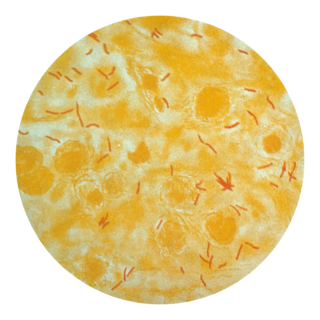 W
WTuberculosis is diagnosed by finding Mycobacterium tuberculosis bacteria in a clinical specimen taken from the patient. While other investigations may strongly suggest tuberculosis as the diagnosis, they cannot confirm it.
 W
WTuberculosis management refers to the medical treatment of the infectious disease tuberculosis (TB).
 W
WThe disease mycobacterial cervical lymphadenitis, also known as scrofula and historically as king's evil, involves a lymphadenitis of the cervical lymph nodes associated with tuberculosis as well as nontuberculous (atypical) mycobacteria.
 W
WTuberculous lymphadenitis is the most common form of tuberculosis infections that appears outside the lungs. Tuberculous lymphadenitis is a chronic, specific granulomatous inflammation of the lymph node with caseation necrosis, caused by infection with Mycobacterium tuberculosis or related bacteria.
 W
WTuberculous meningitis is also known as TB meningitis or tubercular meningitis. Tuberculous meningitis is Mycobacterium tuberculosis infection of the meninges—the system of membranes which envelop the central nervous system.
 W
WTuberculosis verrucosa cutis is a rash of small, red papular nodules in the skin that may appear 2–4 weeks after inoculation by Mycobacterium tuberculosis in a previously infected and immunocompetent individual.
 W
WDr Joseph Friedrich ("Fritz") Weleminsky, was a physician, a scientist and a privatdozent in Hygiene at the German University, Prague who, in the early 20th century, created an alternative treatment for tuberculosis, tuberculomucin Weleminsky.
 W
WWorld Tuberculosis Day, observed on 24 March each year, is designed to build public awareness about the global epidemic of tuberculosis (TB) and efforts to eliminate the disease. In 2012, 8.6 million people fell ill with TB, and 1.3 million died from the disease, mostly in low and middle-income countries.